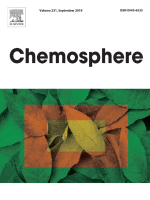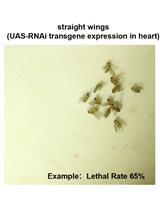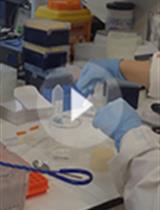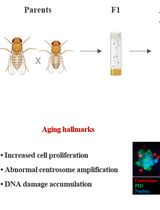- EN - English
- CN - 中文
A Reliable and Consistent Method to Quantify Percent Lethality and Life Span in Drosophila melanogaster
一种可靠的和一致的方法来量化黑腹果蝇的致死率和寿命
(*contributed equally to this work) 发布: 2023年01月20日第13卷第2期 DOI: 10.21769/BioProtoc.4598 浏览次数: 2240
评审: Nafisa M. JadavjiChetan PaliwalDjamel Eddine Chafai
Abstract
Drosophila melanogaster is a classic model organism to study gene function as well as toxicological effects. To study gene function, the expression of a particular gene of interest is disrupted by using the widely explorable Drosophila genetic toolkit, whereas to study toxicological effects the flies are exposed to a particular toxicant through diet. These experiments often require the quantification of lethality from embryonic to adult stages, as well as the assessment of the life span in order to check the role of the gene/toxicant of interest in Drosophila. Here, we propose an experimental protocol that enables a consistent and rigorous assessment of lethality and life span of cadmium chloride (CdCl2)–exposed or genetically perturbed flies [downregulation and overexpression of the cytosolic Cu, Zn superoxide dismutase (SOD1) gene], consecutively. The protocol insists upon the requirement of one single experimental setup that is unique, distinctive, and cost-effective as it engages minimal laboratory equipment and resources. The described methods lead to the smooth observation of the embryos, their successive stagewise transition, and life span of the adult flies post eclosion. Additionally, these methods also facilitate the assessment of crawling and climbing behavioral parameters of the larvae and adults, respectively, and allow the calculation of lethal concentration (LC50) for the mentioned toxicant as well as median survival of the flies, which can be a determining factor in proceeding with further stages of experiments.
Graphical abstract

Background
Drosophila melanogaster, a holometabolous, invertebrate model organism, has contributed extensively towards analyzing the roles of various phylogenetically conserved genes (Green et al., 2018; Dubey et al., 2020). Toxicological studies utilizing flies have also aided in the assessment of the effects of heavy metals that interfere with important biological processes (Nanda and Firdaus, 2021; Nanda and Firdaus, 2022), including immune system (Nanda et al., 2019). Drosophila research has also paved a way for the exploration of innumerable scientific questions in various branches of biological sciences. Notably, Drosophila melanogaster genome is 60% homologous to humans (Adams et al., 2000).
Analysis of Drosophila health and activity is a fundamental aspect to quantify any adversities either due to genetic manipulation or dietary exposure to toxicant. Among the various life traits, quantifying stagewise lethality, checking life span (Carey et al., 2006), and examining locomotor and reproductive capabilities (Rogina et al., 2007) are the biomarkers most often used (Landis et al., 2020; Olcott et al., 2010). Several behavioral assays also facilitate the analysis of a typical mutant from embryonic to adult stage (Ain and Firdaus, 2021).
The Cu, Zn superoxide dismutase (SOD1) is an antioxidant enzyme that provides protection against excessive reactive oxygen species (ROS) in Drosophila melanogaster. The three isoforms of SOD in Drosophila, namely SOD1, mitochondrial Mn superoxide dismutase SOD 2 (SOD2), and extracellular Cu Zn superoxide dismutase (SOD 3), are encoded by genes located on separate chromosomal loci (Duttaroy et al., 1994; Blackney et al., 2014). In this protocol, we used Drosophila wherein the cytosolic SOD1 gene expression was either overexpressed or downregulated in a ubiquitous manner through genetic crosses between the driver Act-5c-GAL4 and the responder RNAi/overexpression fly lines. This enabled the study of the role of SOD1 gene in life span, lethality, and motility behaviour of Drosophila.
We describe a simple continuous method that requires a single experimental setup to perform both the lethality and life span assays of the genetically altered or toxicant-exposed Drosophila. The protocol is unique and significant, due to the fact that it highlights the usage of minimal laboratory equipment and uses one single experimental setup for continuous monitoring of lethality followed by survival analysis and crawling and climbing assays in larvae and adults, respectively.
Materials and Reagents
Autoclavable glass vials (Borosil, custom made, RIVIERA brand)
Black craft paper (120 GSM)
Brush (soft and synthetic bristles)
Cylinder with spout, CL B (Borosil, catalog number: 3022006)
Conical flask (Borosil)
Graph paper (0.2 mm2)
Measuring cylinder (Borosil)
Non-absorbent cotton
Petri plate (Borosil, catalog number: 3165077
Pipette and microtips (100–1,000 μL) (Thermo Scientific, catalog number: NH27702)
Stirrer (Borosil)
Tapping pad (self-made with soft, cushion material)
Tissue roll, 20 m (Indiamart, catalog number: 128587378)
Watch glass, 75 mm (MRSC Borosilicate)
Agar agar, type I (HiMedia, catalog number: 0000227116)
Agarose low EEO, regular grade (SRL, catalog number: 9303545)
Cadmium chloride (CdCl2) (Rankem, catalog number: N041M14)
Corn flour (single batch) (Dr. RBL’s Corn Flour Atta)
Propionic acid (Qualigens, catalog number: 26955)
Sucrose (TITAN, CAS-57-50-1)
Yeast extract: TM media
Drosophila stocks (Bloomington Drosophila Stock Center):
a) BS #24750: w[1]; P{w[+mC]=UAS-Sod1.A}B37 (express SOD1 under UAS control); mentioned as the simplified name w;+;UAS-SOD1
b) BS #24493: w[*];P{w[+mC]=UAS-Sod1.IR}F103/SM5 (express dsRNA of SOD1 under UAS control); mentioned as w;UAS-SOD1-RNAi;+
c) w;Act-5c-GAL4/CyO-GFP;+ (ubiquitous GAL4)
d) Oregon R (wild-type strain of Drosophila)
Drosophila food media (100 mL) (see Recipes)
Egg-laying media (20 mL) (see Recipes)
Petri plate for crawling assay (2% agarose) (see Recipes)
10 mM CdCl2 stock solution (see Recipes)
30 mM CdCl2 stock solution (see Recipes)
100 mM CdCl2 stock solution (see Recipes)
Equipment
Autoclave (Equitron, catalog number: 7431STWL.AFH.430)
BOD incubator (Thermotech, catalog number: TH-7004)
Fluorescence microscope (RADICAL Scientific, catalog number: RXLr-5-50)
Lab electric heater: eiSCO, 220 V, up to 450°C
Stereomicroscope (Magnus Analytics, MSZ-Bi, catalog number: 16G1070)
Water distillation unit (BOROSIL-HD-XL, Yuwinsil)
Weighing balance (Mettler Toledo, catalog number: ME204/A04)
Thermometer (LABWORLD, mercury thermometer)
Software
GraphPad Prism 9
Procedure
文章信息
版权信息
© 2023 The Authors; exclusive licensee Bio-protocol LLC.
如何引用
Kumari, P., Ain, U. and Firdaus, H. (2023). A Reliable and Consistent Method to Quantify Percent Lethality and Life Span in Drosophila melanogaster. Bio-protocol 13(2): e4598. DOI: 10.21769/BioProtoc.4598.
分类
发育生物学 > 细胞生长和命运决定 > 成熟衰老
您对这篇实验方法有问题吗?
在此处发布您的问题,我们将邀请本文作者来回答。同时,我们会将您的问题发布到Bio-protocol Exchange,以便寻求社区成员的帮助。
Share
Bluesky
X
Copy link












